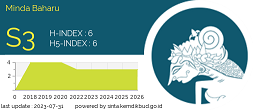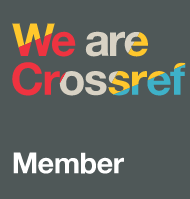STEM EDUCATION WORKSHOP DI MGMP MATEMATIKA SMP KOTA BANDUNG UNTUK MENINGKATKAN KOMPETENSI GURU
Abstract
Keywords
Full Text:
PDFReferences
Ahmad, I. (2018). Proses Pembelajaran Digital dalam Era Revolusi Era 4.0. Direktur Jendral Pembelajaran dan Kemahasiswaan. Kementerian Riset, Teknologi, dan Pendidikan Tinggi. Jakarta.
Bowman, K. (2010). Background paper for the AQF Council on generic skills. South Australian Department of Further Education Employment Science and Technology
Capraro, R. M., Capraro, M. M., dan Morgan, J. R. (2013). STEM Project-Based Learning: An Integrated Science, Technology, Engineering, and Mathematics (STEM) Approach. Sense Publishers. https://doi.org/10.1007/978-94-6209-143-6
Eltanahy, M., Forawi, S., dan Mansour, N. (2020). Incorporating Entrepreneurial Practices into STEM Education: Development of Interdisciplinary E-STEM Model in High School in the United Arab Emirates. Thinking Skills and Creativity, 37(April), 100697. https://doi.org/10.1016/j.tsc.2020.100697
English, L.D., dan King, D.T. (2015). STEM learning through engineering design: Fourth-grade students’ investigations in aerospace. International Journal of Stem Education, 2, 1-18.
Furner, J.M., dan Kumar, D.D. (2007). The mathematics and science integration argument: A stand for teacher education. Eurasia Journal of Mathematics, Science and Technology Education, 3(3), 185–189. https://doi.org/10.12973/ejmste/75397
Gallant, D.J. (2010). Science, Technology, Engineering, and Mathematics (STEM) education. McGraw-Hill.
Gundogdu, N.S., dan Tunc, M.P. (2022). Improving Middle School Students ’ Proportional Reasoning Through STEM Activities. Journal of Pedagogical Research, 6(2), 164–185.
Hester, K., dan Cunningham, C. (2007). Engineering is elementary: An engineering and technology curriculum for children. ASEE Annual Conference and Exposition, Conference Proceedings. https://doi.org/10.18260/1-2--1469
Jolly, A. (2017). STEM by Design Strategies and Activities for Grades 4-8. Routledge.
Lamb, R., Akmal, T., dan Petrie, K. (2015). Development of a cognition-priming model describing learning in a STEM classroom. Journal of Research in Science Teaching, 52(3), 410–437. https://doi.org/10.1002/tea.21200
Morrison, J. (2006). Attributes of STEM education: The student, the school, the classroom. TIES (Teaching Institute for Excellence in STEM).
Öner, A.T., dN Capraro, R.M. (2016). Is STEM academy designation synonymous with higher student achievement? Education and Science, 41(185), 1–17. https://doi.org/10.15390/EB.2016.3397
Roberts, A., dan Cantu, D.V. (2012). Applying STEM Instructional Strategies to Design and Technology Curriculum.
Rennie, L., Venville, G., dan Wallace, J. (2012). Reflecting on curriculum integration: Seeking balance and connection through a worldly perspective. In L. Rennie, G. Venville, & J. Wallace (Eds.), Integrating Science, Technology, Engineering, and Mathematics: Issues, Reflections, and Ways Forward (pp. 123–142). Routledge.
Sahin, A., Ayar, M. C., dan Adiguzel, T. (2014). STEM Related After-School Program Activities and Associated Outcomes on Student Learning. Educational Sciences: Theory & Practice, 14(1), 309–322. https://doi.org/10.12738/estp.2014.1.1876
Thibaut, L., Ceuppens, S., De Loof, H., De Meester, J., Goovaerts, L., Struyf, A., Boeve-de Pauw, J., Dehaene, W., Deprez, J., De Cock, M., Hellinckx, L., Knipprath, H., Langie, G., Struyven, K., Van de Velde, D., Van Petegem, P., dan Depaepe, F. (2018). Integrated STEM Education: A Systematic Review of Instructional Practices in Secondary Education. European Journal of STEM Education, 3(1), 1–12. https://doi.org/10.20897/ejsteme/85525
DOI: https://doi.org/10.33373/jmb.v7i2.5861
Refbacks
- There are currently no refbacks.
License URL: https://creativecommons.org/licenses/by/4.0/

Ciptaan disebarluaskan di bawah Lisensi Creative Commons Atribusi 4.0 Internasional.
















